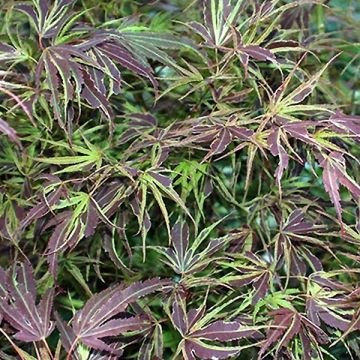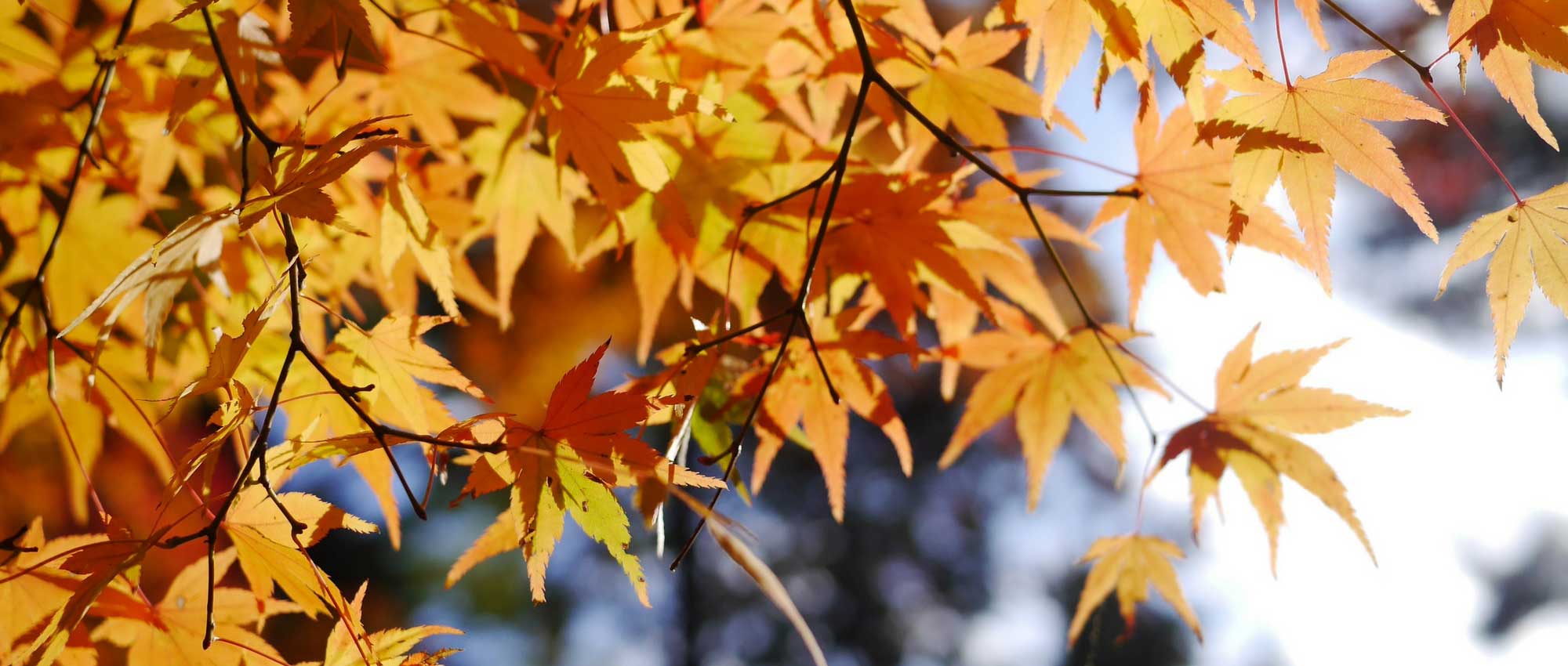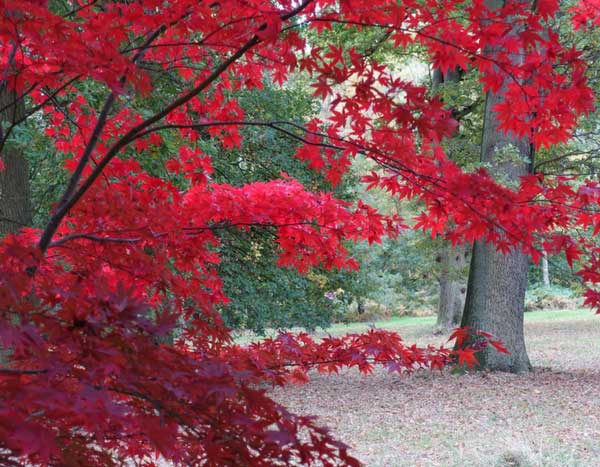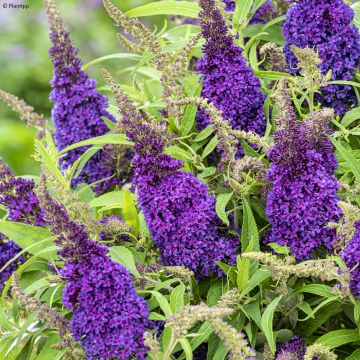

Acer palmatum Pung Kil - Japanese Maple
Acer palmatum Pung Kil - Japanese Maple
Acer palmatum Pung Kill
Japanese Maple, Palmate Maple
Special offer!
Receive a €20 voucher for any order over €90 (excluding delivery costs, credit notes, and plastic-free options)!
1- Add your favorite plants to your cart.
2- Once you have reached €90, confirm your order (you can even choose the delivery date!).
3- As soon as your order is shipped, you will receive an email containing your voucher code, valid for 3 months (90 days).
Your voucher is unique and can only be used once, for any order with a minimum value of €20, excluding delivery costs.
Can be combined with other current offers, non-divisible and non-refundable.
Why not try an alternative variety in stock?
View all →This plant carries a 24 months recovery warranty
More information
We guarantee the quality of our plants for a full growing cycle, and will replace at our expense any plant that fails to recover under normal climatic and planting conditions.
Would this plant suit my garden?
Set up your Plantfit profile →
Description
The Acer palmatum 'Pung Kil' is a beautiful small Japanese Maple with finely cut foliage, whose colour variations bring life to different seasons in the garden. The young spring shoots emerge in shades of red and darken more and more to become a dark red-purple. When autumn arrives, they embrace orange and carmine red, ending the season in beauty. The compact variety is very hardy, has a relatively narrow silhouette and grows in mild sun or partial shade, in cool and slightly acidic soil.
Native to eastern China, Korea, and Japan, the Acer palmatum is the origin of numerous horticultural varieties that compete in beauty. The Japanese Maple now belongs, like all Maples, to the Sapindaceae family (formerly the Aceraceae family).
The Acer palmatum, also called Japanese Maple because of its origin, has been cultivated in Japan for more than 300 years, in gardens or formed into bonsai, inspiring a true cult among the Japanese. In nature, it is a small tree approximately 7 to 8 m (23 to 26ft) high, but can exceed 10 m (33ft), with leaves divided into palmate lobes and living in moist and slightly acidic soil. A favourite species among collectors, there are hundreds of horticultural varieties, proof of the enthusiasm for this plant, not only in Japan.
'Pung Kil' (also known as 'Pung Kill') is one of these cultivars. Selected in South Korea, it was named in honour of Mr. Pung Kil, from the Chollipo arboretum (west coast of South Korea, overlooking the Yellow Sea), and it fascinates with its foliage. Slow-growing, this Japanese Maple reaches a height of only about 2 m (7ft) in ten years of planting, with a width of 1.20 m (4ft). It then adopts a narrow, more or less conical and regular habit. Eventually, it can reach a height of 3 m (10ft) and tends to expand in width to form a beautiful tuft with a span of 2 m (7ft) to 2.50 m (8ft).
In spring, young red leaves emerge, palmately lobed, deeply cut, usually with five narrow and elongated lobes, pointed at the tip and finely toothed. These characteristic leaves of the species are particularly fine here, with remarkable graphic aesthetics. Quickly, their colour darkens, becoming a very dark red-purple throughout the summer. The slightest breeze stirs the vegetation, as the delicate and light leaves are inserted on very flexible and mobile branches. In autumn, the plant shines in orange and carmine red, before the leaves fall, forming a temporary decorative carpet on the ground.
The Japanese Maple 'Pung Kil' will find its place in every garden due to its small size. Inevitably attracting interest with its particularly architectural foliage and colours, it can be planted in beds with other plants sharing the same needs, in cool, slightly acidic soil and in filtered sunlight. Combine it with the Parrotia persica Bella, which you will place in the background due to its adult size. To ensure beautiful flowering, plant some Camellias, choosing both spring and autumn/winter flowering varieties (C. sasanqua varieties). Their glossy evergreen dark green leaves will contrast and enhance the colours of your Maple and Parrotia. The Enkianthus campanulatus, a shrub with pink bells in May-June, will also be a good companion, as well as the essential Hydrangeas (Hydrangea) that will animate the summer with their abundant flowering...
Plant habit
Flowering
Foliage
Botanical data
Acer
palmatum
Pung Kill
Sapindaceae
Japanese Maple, Palmate Maple
Cultivar or hybrid
Other Japanese Maples
View all →Planting and care
The Acer palmatum 'Pung Kil' is planted in spring or autumn in a preferably light, humus-bearing, neutral to acidic, deep, flexible and well-drained soil, in a sunny, non-burning, semi-shaded or even shady position, sheltered from cold and dry winds. The soil should be kept moist by mulching in summer if necessary, especially when the plant is exposed to the sun, but should not be waterlogged in winter. Apply a significant amount of organic matter every three years to ensure a good humus content in the soil. Mulch, water and spray the foliage on hot evenings. Winter pruning is limited to balancing the branches. Treat preventively against aphids and Verticillium, a fungal disease that occurs in heavy and overly wet soil.
Planting period
Intended location
Care
Planting & care advice
This item has not been reviewed yet - be the first to leave a review about it.
Similar products
Haven't found what you were looking for?
Hardiness is the lowest winter temperature a plant can endure without suffering serious damage or even dying. However, hardiness is affected by location (a sheltered area, such as a patio), protection (winter cover) and soil type (hardiness is improved by well-drained soil).

Photo Sharing Terms & Conditions
In order to encourage gardeners to interact and share their experiences, Promesse de fleurs offers various media enabling content to be uploaded onto its Site - in particular via the ‘Photo sharing’ module.
The User agrees to refrain from:
- Posting any content that is illegal, prejudicial, insulting, racist, inciteful to hatred, revisionist, contrary to public decency, that infringes on privacy or on the privacy rights of third parties, in particular the publicity rights of persons and goods, intellectual property rights, or the right to privacy.
- Submitting content on behalf of a third party;
- Impersonate the identity of a third party and/or publish any personal information about a third party;
In general, the User undertakes to refrain from any unethical behaviour.
All Content (in particular text, comments, files, images, photos, videos, creative works, etc.), which may be subject to property or intellectual property rights, image or other private rights, shall remain the property of the User, subject to the limited rights granted by the terms of the licence granted by Promesse de fleurs as stated below. Users are at liberty to publish or not to publish such Content on the Site, notably via the ‘Photo Sharing’ facility, and accept that this Content shall be made public and freely accessible, notably on the Internet.
Users further acknowledge, undertake to have ,and guarantee that they hold all necessary rights and permissions to publish such material on the Site, in particular with regard to the legislation in force pertaining to any privacy, property, intellectual property, image, or contractual rights, or rights of any other nature. By publishing such Content on the Site, Users acknowledge accepting full liability as publishers of the Content within the meaning of the law, and grant Promesse de fleurs, free of charge, an inclusive, worldwide licence for the said Content for the entire duration of its publication, including all reproduction, representation, up/downloading, displaying, performing, transmission, and storage rights.
Users also grant permission for their name to be linked to the Content and accept that this link may not always be made available.
By engaging in posting material, Users consent to their Content becoming automatically accessible on the Internet, in particular on other sites and/or blogs and/or web pages of the Promesse de fleurs site, including in particular social pages and the Promesse de fleurs catalogue.
Users may secure the removal of entrusted content free of charge by issuing a simple request via our contact form.
The flowering period indicated on our website applies to countries and regions located in USDA zone 8 (France, the United Kingdom, Ireland, the Netherlands, etc.)
It will vary according to where you live:
- In zones 9 to 10 (Italy, Spain, Greece, etc.), flowering will occur about 2 to 4 weeks earlier.
- In zones 6 to 7 (Germany, Poland, Slovenia, and lower mountainous regions), flowering will be delayed by 2 to 3 weeks.
- In zone 5 (Central Europe, Scandinavia), blooming will be delayed by 3 to 5 weeks.
In temperate climates, pruning of spring-flowering shrubs (forsythia, spireas, etc.) should be done just after flowering.
Pruning of summer-flowering shrubs (Indian Lilac, Perovskia, etc.) can be done in winter or spring.
In cold regions as well as with frost-sensitive plants, avoid pruning too early when severe frosts may still occur.
The planting period indicated on our website applies to countries and regions located in USDA zone 8 (France, United Kingdom, Ireland, Netherlands).
It will vary according to where you live:
- In Mediterranean zones (Marseille, Madrid, Milan, etc.), autumn and winter are the best planting periods.
- In continental zones (Strasbourg, Munich, Vienna, etc.), delay planting by 2 to 3 weeks in spring and bring it forward by 2 to 4 weeks in autumn.
- In mountainous regions (the Alps, Pyrenees, Carpathians, etc.), it is best to plant in late spring (May-June) or late summer (August-September).
The harvesting period indicated on our website applies to countries and regions in USDA zone 8 (France, England, Ireland, the Netherlands).
In colder areas (Scandinavia, Poland, Austria...) fruit and vegetable harvests are likely to be delayed by 3-4 weeks.
In warmer areas (Italy, Spain, Greece, etc.), harvesting will probably take place earlier, depending on weather conditions.
The sowing periods indicated on our website apply to countries and regions within USDA Zone 8 (France, UK, Ireland, Netherlands).
In colder areas (Scandinavia, Poland, Austria...), delay any outdoor sowing by 3-4 weeks, or sow under glass.
In warmer climes (Italy, Spain, Greece, etc.), bring outdoor sowing forward by a few weeks.



































































